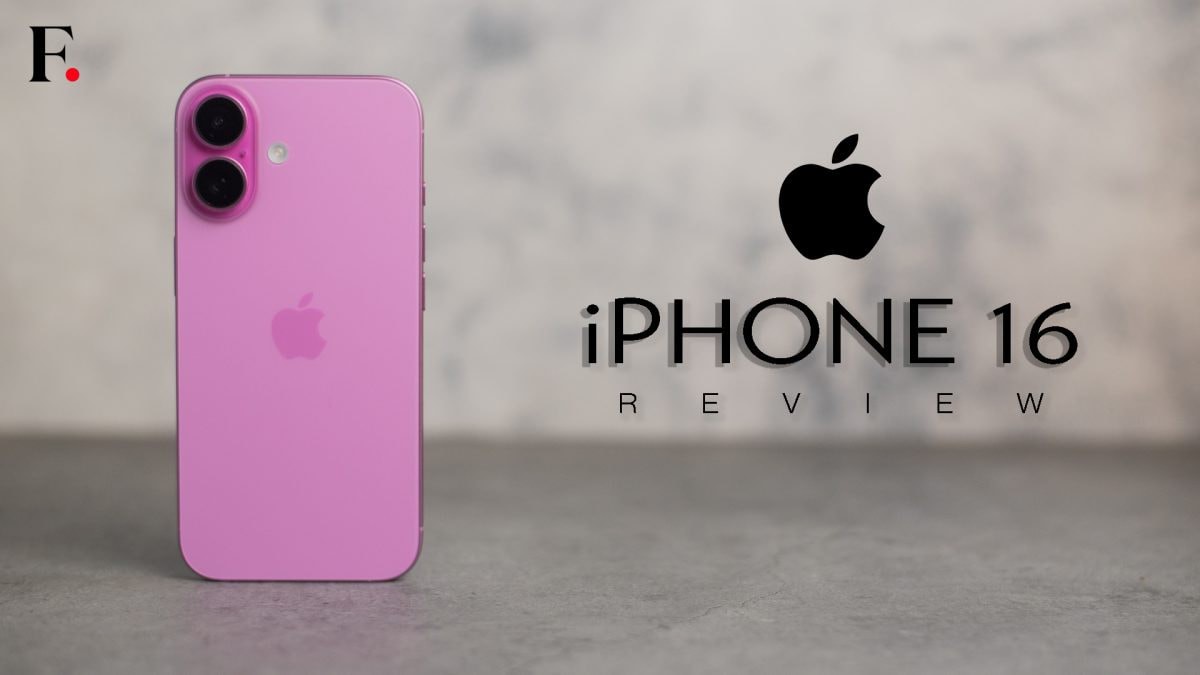– iOS 18 has some massive new updates
– Snappy performance
– Solid camera performance thanks to the new image pipeline of the A18
– Built like a tank
– Small form factor
– Gets most of the new features of the Pro models including Camera Control
– Closest to a Pro iPhone a standard iPhone has ever been
Cons:
– 60Hz display is a massive paint point
– USB-C limited to USB 2.0 speed
– Apple Intelligence features is still not officially available in India
– Slow wired charging at 20W
Pricing: Rs 79,900 for the base 128GB variant
Rating: 4.75/5
For a while now, the gap between the standard iPhones and the feature-rich Pro models has been narrowing with each new release. With the iPhone 16 series, that gap is the slimmest it has ever been. Typically, when Apple launches new iPhones, the standard models don’t receive as many exciting an updates as the Pro variants. There have even been times when the standard models didn’t get a new SoC and had to make do with the previous gen’s SoC. Obviously, this led to criticism from both tech enthusiasts and Apple fans alike.
However, this time around, things are quite different.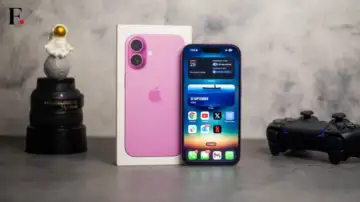
Image Credit: Firstpost | Mehul Reuben Das
Never before has the standard iPhone been so closely aligned with its Pro counterparts as it is with the iPhone 16. For the first time, the basic iPhone model boasts many of the same features found in the iPhone 16 Pro. In fact, it shares practically the same SoC – the A18, which, only has a single core missing from the GPU, when compared to the A18 Pro that powers the Pro models.
Even otherwise, this year’s iPhone 16 lineup shares a lot more similarities than in previous years. For instance, the iPhone 16 now includes the Action button, which was previously exclusive to the iPhone 15 Pro models. It also has the same Camera Control button found in the Pro versions and offers a similar set of Apple Intelligence features
That said, there are still some differences. The iPhone 16 sticks with a dual-camera setup, which has seen not only a new layout but also some significant upgrades over the iPhone 15. Additionally, there are some distinctions in battery size and the display. The 6.1-inch Super Retina XDR display doesn’t include ProMotion or always-on capabilities – features that Apple reserves for the Pro models.
So, how does the iPhone 16 hold up as an overall package? Should you choose the iPhone 16 over the iPhone 16 Pro or iPhone 16 Pro Max? Let’s find out!
Image Credit: Firstpost | Mehul Reuben Das
iPhone 16 Review: Design
The iPhone 16 looks markedly different from the iPhone 15 for a number of reasons. First off, there is the new, redesigned camera module. Then there are the shades of colour, which ditch the more muted, pastel shades for some bright and vibrant tones. Having said that, classic Apple aesthetic is still intact.
After spending a week with this device, it feels almost identical to the iPhone 15, especially the hand. A glance at the spec sheets will confirm that dimension-wise, not a lot has changed.
The iPhone 16 measures 146.7 x 71.6 x 7.8mm and weighs about 170 grams, and I really appreciate this. In a world where smartphones are getting insanely massive, its really refreshing to have a more reasonably sized one. The iPhone 16’s unchanged size makes it easy to handle with one hand, especially when compared to the bulkier iPhone 16 Pro and Pro Max models.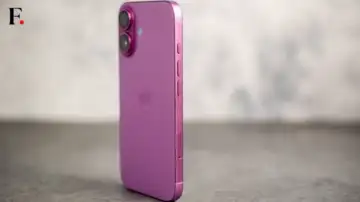
Image Credit: Firstpost | Mehul Reuben Das
Apple has used aerospace-grade aluminium in the construction of the iPhone 16, which makes ti both lighter and much sturdier. The Cupertino-based giant also claims that their latest generation of Ceramic Shield glass is tougher than ever and more resilient to scratches. Nonetheless, I would advise users to invest in a good screen protector and a case for extra protection.
The iPhone 16 retains the modern look introduced with the iPhone 15, featuring smooth, rounded edges and vibrant colour-infused backs. This time around, Apple has gone beyond the usual soft colours to offer a lively palette that’s perhaps the most exciting we’ve seen in years.
I’ve got the Pink model, and it’s a lovely shade that shifts depending on the light. Other options include White, Teal, Black and Ultramarine.
One of the most noticeable updates is on the back, where the camera setup is now vertical. The 48MP Fusion camera sits above the 12MP ultrawide lens, forming a slightly raised glass bump that has a unique pill-like shape. The true tone flash is off to the side, outside the camera bump. The new layout isn’t just about aesthetics, it also allows the iPhone 16 to take Spatial Photos and Videos, something that Apple has been focusing more on as of late.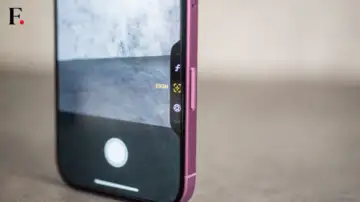
Image Credit: Firstpost | Mehul Reuben Das
This year, the iPhone 16 introduces two exciting buttons. The first is the Action Button, which first appeared on the iPhone 15 Pro. The Action Button allows you to select from various presets, such as turning on the flashlight, enabling an accessibility feature, using Shazam, or launching the camera. It’s conveniently placed above the volume buttons on the left side. You can also set it to replace the traditional mute switch.
We also get the new “Camera Control” near the bottom, on the side where we have the power button. The camera control isn’t exactly a button, but does function like one – t’s equipped it is a capacitive touch panel which includes some haptics that get triggered by different types of presses and gestures. The Camera Control is designed to mimic the shutter button on proper, cameras, and also has the same functionality as what you would expect in a basic DSLR or mirror’s shutter system, plus a few additional features.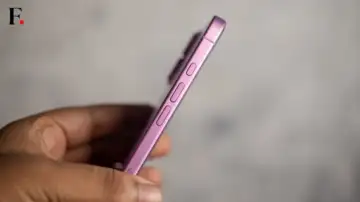
Image Credit: Firstpost | Mehul Reuben Das
You can use the Camera Control to snap photos or double-press lightly to pull up camera settings. If you want to zoom in or out, simply swipe left or right, which is a straightforward and intuitive feature.
I’ll go into more detail later, but I believe this could be one of the most significant additions to the iPhone, especially considering how frequently people use their phones to take pictures.
At the bottom, you get a pair of speaker grills and a USB-C port, which is still rated at USB 2.0 speeds.
iPhone 16 Review: Display
Unlike the iPhone 16 Pro, the new iPhone 16 doesn’t change screen size; it still features a 6.1-inch Super Retina XDR display with a resolution of 2,556 x 1,179 pixels.
Visually, the display holds up well. It’s a nice OLED panel that handles most tasks without issue. The iPhone 16’s display has enough saturation and contrast to make scenes stand out, thanks to its wide P3 colour gamut. In terms of brightness, it offers a maximum of 1,000 nits (typical), 1,600 nits peak brightness for HDR, 2,000 nits for outdoor use, and a minimum brightness of just 1 nit.
Image Credit: Firstpost | Mehul Reuben Das
One of the features I really enjoy is the Dynamic Island and its versatility. With iOS, you get visual feedback through Live Activities that can overlay on the Dynamic Island. This means you can easily dismiss a timer after watching it count down or access music playback controls that match the colours of the album artwork and audio waveform.
Third-party apps, like Zomato or Blinkit, can also use Dynamic Island to keep you updated on your delivery status. It’s super functional and houses the Face ID sensors for secure unlocking and authentication. Plus, the 12-megapixel front-facing camera is conveniently located within the Dynamic Island, making it easy to take selfies, join video calls, or record your next viral TikTok.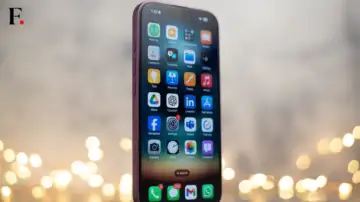
Image Credit: Firstpost | Mehul Reuben Das
Similar to the iPhone 15, the Super Retina XDR display does not feature an always-on option and lacks ProMotion, which is Apple’s term for a 120Hz refresh rate.
While I’m fine with not having an always-on display, I find it disappointing that Apple has stuck with a 60Hz refresh rate for its less expensive flagship models, especially when many more affordable phones offer better refresh rates.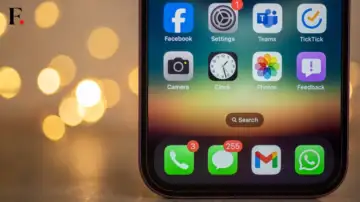
Image Credit: Firstpost | Mehul Reuben Das
What’s frustrating is that once you’ve experienced a phone with a 120Hz or even a 90Hz display, going back to a 60Hz panel can feel like a downgrade. This becomes particularly annoying when you spend a lot of time reading on your phone.
The display performs well for gaming, scrolling through Instagram, and watching videos on streaming platforms like YouTube. However, browsing the web or reading lengthy articles can feel a bit jarring due to that lower refresh rate.
iPhone 16 Review: Camera
The iPhone 16 and iPhone 16 Plus comes with the same dual-camera system that we saw in the iPhone 15 and iPhone 15 Plus, albeit with some major improvements. The iPhone 16 features a 48MP Fusion camera paired with a 12MP ultrawide camera. The cameras get a massive benefit from the upgraded image processing capabilities of the A18 chip.
The 12MP ultrawide camera is of particular note, as it now supports macro photography, a feature that was previously reserved for the Pro versions. You can shoot with a 0.5x ultrawide lens, and zoom all the way up to a 2x telephoto or 10x digital zoom.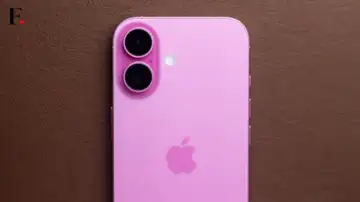
Image Credit: Firstpost | Mehul Reuben Das
While it lacks the versatility of the iPhone 16 Pro models, the iPhone 16 still holds its own in performance.
I’m particularly impressed by the sharpness and detail produced by the iPhone 16’s main camera. The “Fusion” technology effectively combines four pixels into one, delivering 48-megapixel quality in a standard 24MP image. The 24MP images come out vibrant and provide lovely bokeh effects around subjects. When it comes to zoom, we noticed that detail suffer a bit when zooming with the main camera since it’s not equipped with optical zoom. However, the colours remain consistent, and the algorithm performs well.
Moreover, the iPhone 16 has improved handling of light flares during low-light conditions, thanks to a new anti-reflective coating. The addition of a 2x telephoto option lets you zoom in using the full 48MP sensor, making it easier to capture portraits or focus on specific details.
Then there are the features of the new Camera Control feature. I had to spend a few days familiarizing myself with the controls, especially figuring out how much pressure to use and uncovering the hidden menus. Once I got the hang of it, I found the positioning to be intuitive.
With a couple of light presses, you can access advanced settings such as exposure, depth, zoom, camera styles, and tone. Tapping into these options allows you to swipe through presets and adjust as needed. When you activate the Camera Control, the interface simplifies, showcasing just the digital shutter button.
Image Credit: Firstpost | Mehul Reuben Das
Although Apple isn’t the first to introduce an advanced shutter button, they’ve uniquely combined features like a force sensor and haptic feedback with a touch interface and a sleek sapphire crystal finish. This gives the iPhone 16 a premium feel, making it an attractive option for anyone looking to enhance their photography experience.
The colour accuracy of the 12MP front camera matches that of the rear cameras on the iPhone 16, delivering images that are clear and incredibly sharp. This level of quality extends to videos captured with the front-facing camera as well, ensuring that they look just as impressive.
When it comes to video recording, the iPhone 16 offers impressive capabilities, including 4K Dolby Vision video at frame rates of 24 fps, 25 fps, 30 fps, or 60 fps. You can also shoot 1080p Dolby Vision video at 25 fps, 30 fps, or 60 fps, as well as 720p Dolby Vision at 30 fps. It supports Cinematic mode up to 4K Dolby Vision at 30 fps and Action mode up to 2.8K Dolby Vision at 60 fps. Plus, there’s macro video recording, along with options for slow-motion and time-lapse. Slow-motion video can be recorded in 1080p at either 120 fps or 240 fps.
While the video features aren’t as advanced as those found on the iPhone 16 Pro and Pro Max, it’s important to note that the Pro models offer capabilities that might be more than what the average user needs. For regular users or even amateur content creators, the camera on the standard iPhone 16 is more than sufficient for capturing high-quality videos.
For some samples of unedited photos from the iPhone 16, click here.
iPhone 16 Review: Performance, software experience and UI
The iPhone 16 is powered by Apple’s impressive A18 Bionic chip, made using TSMC’s cutting-edge 3nm N3E process. Apple claims this new chip delivers a 30% boost in CPU performance and a whopping 40% increase in GPU speed compared to the A16 in the iPhone 15. Furthermore, it only has one GPU core less compared to the A18 Pro that powers the iPhone 16 Pro and the 16 Pro Max. Plus, both the CPU and GPU are designed to be more energy-efficient, which definitely contributes to the improved battery life we’ve noticed during testing.
The A18 Bionic also introduces a 16-core neural engine that speeds up machine learning tasks, paving the way for the exciting Apple Intelligence features that are still on the way.
Image Credit: Firstpost | Mehul Reuben Das
You’ll find storage options starting at 128GB, with 256GB and 512GB available as well. While Apple hasn’t confirmed the exact amount of RAM, but various benchmarking apps indicate that the new iPhones come with 8GB, which would also be the minimum required for all the new AI features.
One notable upgrade is the new aluminium thermal substructure, enhancing sustained performance by 30%. During my benchmarking, the iPhone 16 felt cooler than its predecessor, even under heavy use.
The A18 chip also enables better hardware-accelerated ray tracing, which Apple says can give you up to five times the frame rates in compatible games. Just like last year’s Pro models, the iPhone 16 handles AAA games pretty well, although, not as good as the Pro models of this year.
In real-world use, the iPhone 16 delivers a smooth gaming experience similar to what I had with the iPhone 15. While it performs admirably in mobile gaming, the absence of a 120Hz refresh rate is noticeable, especially if you’re used to higher refresh rates.
Whether you’re browsing the web, streaming shows, or multitasking, the iPhone 16 stays responsive and efficient. It handles intense gaming sessions without a hitch, although it does warm up a bit.
Games like Assassin’s Creed and Resident Evil look fantastic, with the upgraded GPU providing smooth gameplay and enhanced details. I’m curious to see how future games will take advantage of this extra power, further solidifying the appeal of gaming on an iPhone.
Image Credit: Firstpost | Mehul Reuben Das
Overall, I’ve been impressed with the iPhone 16. It feels fast and responsive, providing great performance for its price.
It’s clear that the A18 chip has a lot of power and room for future growth. The standard iPhone 16 now feels closer to the Pro models than ever before, especially with features like Camera Control, vibrant colour options, and Apple Intelligence. If only it had a slightly faster display.
Driving the device on a day-to-day basis as your main smartphone will show that the iPhone 16 is more than capable enough to handle whatever you throw at it.
And when you add Apple Intelligence and the new iOS 18 into the mix, things get very interesting. iOS 18 is largely fantastic, even though Apple Intelligence only started rolling out with iOS 18.1. iPhone 16 users will get to enjoy handy features like removing unwanted objects from photos, a more conversational Siri, and AI tools for writing and transcribing text.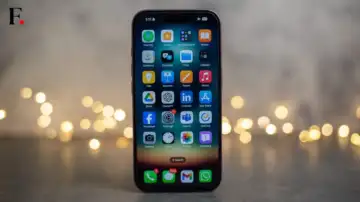
Image Credit: Firstpost | Mehul Reuben Das
Having tested Apple Intelligence during the developer beta, I learned that Apple plans to launch more AI features in select markets later this year, with India likely getting them in early next year. The upcoming iOS 18.2 update is set to introduce even more exciting features, like image generation, ChatGPT integration, and Visual Intelligence, making the iPhone 16 even more appealing.
What Apple is doing with Apple Intelligence isn’t too different from the capabilities found in Google’s Pixel 9 series and Samsung’s Galaxy AI devices. There’s a lot of overlap in features, such as tools for writing assistance, email summaries, and photo editing.
What sets Apple apart, though, is its ecosystem and commitment to user privacy, which is something that’s hard for others to match.
While Apple Intelligence is still evolving, it’s shaping up to be a game-changer for the iPhone 16. Currently, these features aren’t available on the iPhone 16 in India, with an official launch set for 2025. But even without Apple Intelligence, the iPhone 16 comes packed with solid features as part of iOS 18, including new ways to customize your home screen, organize photos, send money easily, and manage passwords with a sleek new password manager.
iPhone 16 Review: Battery
Apple has outfitted the entire iPhone 16 lineup with slightly larger batteries. Reports suggest that the iPhone 16 features a 3,561mAh lithium-ion battery, an upgrade from the 3,349mAh battery found in the iPhone 15. Meanwhile, the iPhone 16 Pro comes with a 3,582mAh battery, the iPhone 16 Plus boasts a 4,674mAh battery, and the iPhone 16 Pro Max is equipped with a 4,685mAh battery.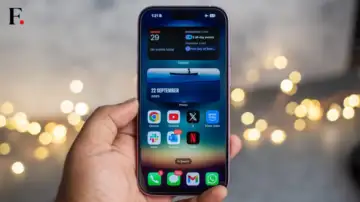
Image Credit: Firstpost | Mehul Reuben Das
On an average day, I usually start using my device around 7:00 AM. Throughout the day, I’m frequently hopping between apps like Gmail, X, Outlook, Chrome, and Slack. I also stream music occasionally, spend an hour or two watching videos, engage in some light gaming, and scroll through social media. By 11:30 PM, I typically have about 30% of the battery remaining. After a week of use and a minor software update, I’m getting around 13-14 hours of screen-on time before needing to charge the iPhone 16.
When it comes to charging, the iPhone 16 only includes a braided USB-C to USB-C cable in the box, but it does support fast charging. I found that I could charge it from 0% to 50% in about 30 minutes using a standard 20-watt adapter.
Additionally, the iPhone 16 features upgraded wireless charging capabilities, supporting the new MagSafe charger and the Qi2 standard. With MagSafe, you can achieve charging speeds of up to 25W, while Qi2 offers up to 15W.
iPhone 16 Review: Verdict
With the iPhone 16 series, the line separating Apple’s standard models from its Pro versions has significantly blurred. For many users, including those who are heavy-duty users, the iPhone 16 Pro and Pro Max are a bit of an overkill and packed to the T with features that many won’t actually use. It’s almost like Apple created a high-end prosumer camera, and slapped on a brilliant smartphone onto it.
What’s truly remarkable this time is that the standard iPhone is equipped with many features that we find in the Pro models, namely the Action Button, Camera Controls, and Apple Intelligence capabilities, and a pretty identical SoC.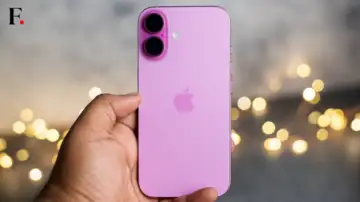
Image Credit: Firstpost | Mehul Reuben Das
The camera on the iPhone 16 performs exceptionally well as well, something that was reserved for the Pro models in a generation. The standard iPhone 16’s camera, especially the main lens, now produces photos that are crisp, vibrant and true-to-life. The only thing missing is a telephoto lens, but we will let the Pros have that. Even in video recording, the iPhone 16 produces some pretty solid results, although it does miss out on some features like ProRes video. But then, it does get some other cool new features like Audio Mix, something even amateur content creators will benefit from.
The only major drawback I found with the iPhone 16 is its 60Hz display, which feels somewhat outdated and lacks the smoothness of competitors boasting higher refresh rates, and the fact that it still has a slow charging speed.
There are many reasons why I would recommend the iPhone 16 to someone who is looking to get into iPhones, It’s almost as fast as the Pro models, it comes in a pretty compact and hand-able weight and size. For anyone who doesn’t need the advanced features of the Pro models, the iPhone 16 is an excellent option.
